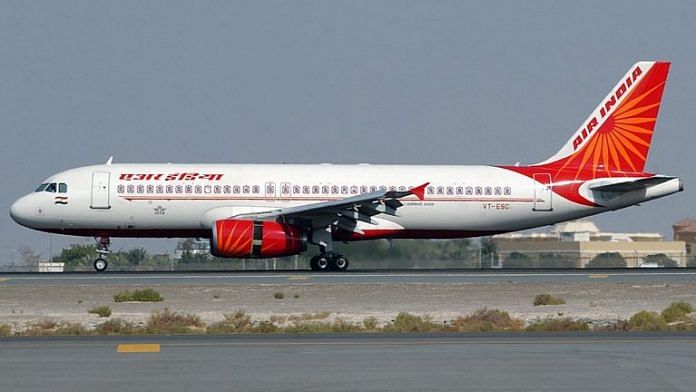Tata Sons Pvt. is set to take over ailing Air India Ltd. again, more than half a century after the country’s biggest conglomerate ceded control to the state, ending the government’s hold over an airline that for decades defined the lofty ambitions of a newly independent nation.
A panel of ministers accepted a proposal from bureaucrats, who recommended the conglomerate’s bid ahead of an offer from entrepreneur Ajay Singh, according to people with knowledge of the matter, who asked not to be identified as the decision isn’t yet public. An official announcement is expected in the coming days, two of the people said.
A top bureaucrat in the ministry for the Department of Investment and Public Asset Management Tuhin Kanta Pandey said the approval of Air India’s sale was incorrect.
Media reports indicating approval of financial bids by Government of India in the AI disinvestment case are incorrect. Media will be informed of the Government decision as and when it is taken. pic.twitter.com/PVMgJdDixS
— Secretary, DIPAM (@SecyDIPAM) October 1, 2021
A civil aviation ministry spokesman didn’t immediately respond to a request for comment. A finance ministry spokesperson couldn’t immediately be reached. A representative for Tata Sons declined to comment.
The proposed handover is a key victory for Prime Minister Narendra Modi, who has embarked on a bold privatization plan to plug a widening budget deficit. It also puts an end to a decades-long struggle to offload the money-losing flag carrier. Multiple governments have tried to sell the airline — which began life as Tata Airlines in 1932 — but those attempts were either met with political opposition or a lack of interest from potential buyers.
For Tata Sons, the holding company for the salt-to-software empire and owner of British luxury carmaker Jaguar Land Rover, the recommendation means it’s coming back to an asset it started almost 90 years ago.
Established by legendary industrialist and philanthropist J.R.D. Tata, who was India’s first licensed pilot, the airline originally flew mail in the 1930s between Karachi in then-undivided, British-ruled India and Bombay, now known as Mumbai.
Once it turned commercial and went public in the 1940s, Air India quickly became popular with those who could afford to take to the skies. Its advertisements featured Bollywood actresses and passengers were treated to champagne and porcelain ashtrays designed by surrealist painter Salvador Dali.
Also read: Air India, Cairn jointly seek stay on New York court proceedings
Advent of private carriers
However, with the advent of private carriers in the 1990s, and then a rush of low-cost, no-frills airlines in the mid-2000s, Air India lost its edge in both domestic and international markets. The carrier, known for its Maharaja mascot, suddenly wasn’t the only option for flying overseas and its reputation for impeccable service and hospitality began to ebb.
Gulf carriers, including Emirates Airline and Etihad Airways PJSC, also began to offer seamless, and cheaper, connections to Europe and the U.S. via their hubs in Dubai and Abu Dhabi, hurting Air India even further.
After Air India merged with state-owned domestic operator Indian Airlines Ltd. in 2007, losses started to mount and by 2013, the country’s then-Civil Aviation Minister said privatization was key to its survival. In 2017, the government approved that route and a committee was set up to start the process.
This most recent sale attempt hasn’t been easy either. IndiGo, the only airline to have publicly shown interest in buying parts of the carrier, dropped out of the reckoning in 2018, saying it didn’t have the wherewithal to acquire Air India in its entirety and make it profitable.
Ultimately that time around there were no bidders and the government had to sweeten the deal by allowing suitors to decide how much of the carrier’s debt they wanted to take on. Even so, politicians belonging to Modi’s own party and unions have resisted the plan.
For Tata Group, Air India adds a third airline brand to its stable, considering the conglomerate already holds a majority interest in AirAsia India and Vistara, a joint venture with Singapore Airlines Ltd. The Economic Times newspaper had previously reported that Tata may emerge as the winning bidder.
Air India — which hasn’t turned a profit since its 2007 merger with Indian Airlines and is now saddled with a debt of around 600 billion rupees ($8.1 billion) — does have some attractive assets, including prized landing and parking slots at London’s Heathrow airport, which may help Vistara lure business travelers with direct flights to Europe.
The purchase, once it goes through, will be a test of the group’s aviation acumen. Tata Group has faced criticism for not running its existing aviation businesses efficiently, even though they represent a tiny portion of overall revenue.
Cyrus Mistry, who succeeded Ratan Tata as chairman of the conglomerate but was later ousted in India’s most high-profile boardroom coup, raised the alarm in an October 2016 letter, saying he pushed backed against both airline ventures.—Bloomberg
Also read: Tatas put in bid for loss-making Air India as disinvestment process enters final stage






